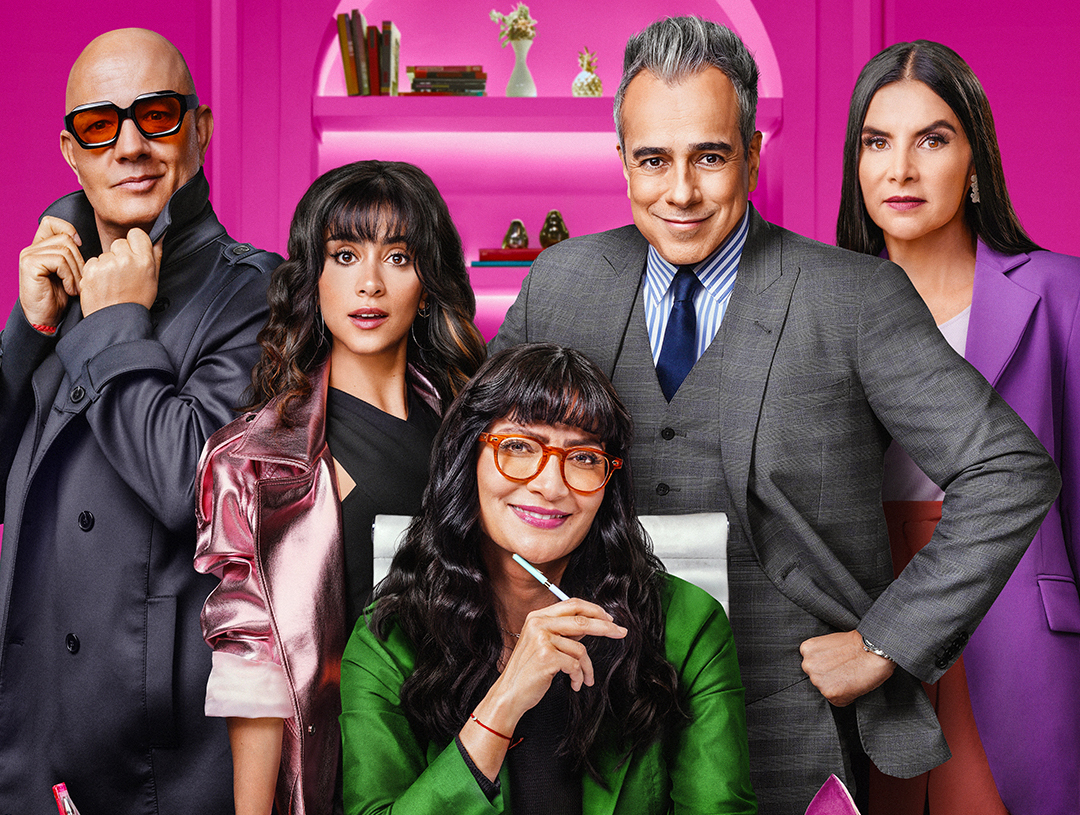Yo Soy Betty, La Fea, the Colombian telenovela of the late 90s, is the best bit of Latinx pop culture ever – and anyone who disagrees with me is very obviously wrong. The original telenovela was so iconic that it was actually one of the few things I shared with my late grandfather — a man who could not be more different from me in, well, every possible way. Somehow Betty La Fea managed to captivate the attention of a hyperactive 7-year-old and a grumpy 60-something (actually, Don Hermés Pinzón reminds me a bit of him, now that I think of it).
The late 90s TV masterpiece shook the world to its core. It inspired over 20 international versions (hailing from almost every other Latin American country as well as Egypt, Israel, Korea, Poland, Russia, the US, and Georgia to name a few). For the uninitiated, the telenovela revolves around Beatriz “Betty” Pinzón, an ugly duckling-type. She’s a nerdy, and traditionally “unattractive” woman who ends up working at Ecomoda, a fictitious Colombian fashion company. Her show depicts Betty’s ups and downs, her romance with her fashion-power-player boss Don Armando, and her transformation from ugly ducking to beautiful swan. As is to be expected with a piece of media from the late ’90s and early 00s, the “ugly” woman only achieves her professional goals and romantic happiness after she undergoes a transformation that makes her more visually appealing to her partner (and the audience – because, you know, misogyny).
In the early 00s, Betty was the target of mockery and disdain for her refusal to conform to stereotypical canons of beauty, and while we were made to believe she was the epitome of ugliness she was not an unattractive woman. She was simply ahead of her time, both in spirit and in style (actually, her style is not that different from the Ugly Chic style Miuccia Prada showcased in her 1996 spring collection). In the 2020s, Beatriz Pinzón would have been plastered all over Alessandro Michele’s Gucci campaigns, attending her meetings at Ecomoda wearing Miu Miu, Loewe, Prada, Olmos y Flores, or Willy Chavarría.
When I first watched the teaser trailer revealing the reboot news, I screamed – literally, my mom came running upstairs thinking I’d hurt myself. As someone who’s worked in the Latinx fashion industry for nearly a decade and who, like Betty, doesn’t quite fit the stereotype of the industry’s “attractive” woman, I am ecstatic that the noxious beauty and body standards of the late 90s and early 00s that Betty La Fea pushed so heavily have started to change. Obviously, not entirely though, since we’re right back to thinking there is a miracle drug that can cure people of their fatness, but I will take what battles we’ve won and I will celebrate those… For now).
I think back on what the fashion industry was 30 years ago (based on what I’ve been told by my teachers, mentors, colleagues, and yes, Betty La Fea), or even how it was 10 years ago while I was still a fashion student, and the things I see now would’ve never been considered possible.
A whole (very small, but still) industry of clothes for fat women modeled by actual fat women and not stick-thin models? Models with no Photoshop and laws that prevent photo retouching? A Gucci lipstick campaign featuring models with crooked teeth (just imagine what Hugo Lombardi would say)? What was considered “ugly” in the times of Ugly Betty is now the fashion industry’s IT factor and I am loving it.
How monumental of a thing for a Latinx show to be able to depict and document an industry so often considered vapid, vain, and void of any meaning (when in reality it has a deep connection to our feelings, thoughts, and the very nature of humans existing in a society, but that might be a conversation of another time) as something that can change to include everyone.
The sequel series seems to have righted some wrongs so far, but it’s still riddled with vestiges of the misogyny that the original telenovela was known for having – things like Betty still feeling the need to change her looks to be her “true self,” the photographs that line the entrance of the new Ecomoda offices (which show women’s legs popping out of shopping bags and only reinforce the idea that women are objects to be dressed and desired and that fashion is vain and empty), and Bertha’s obsession with being thin, for example.
The sequel relies heavily on nostalgia, something that I, a millennial, don’t mind at all. However, I’m hoping that they continue to push forward, past the misogyny, the stereotypes, and the ugly duckling story. After all, fashion is all about innovation and change, and just as Ecomoda tried to break the mold in the Colombian fashion industry of the ’90s, I hope Prime Video’s Betty La Fea: La Historia Continua will break the toxic patterns of its predecessor and become the beautiful swan we all want to see.

